Uncover all the SAR levels for cell phones. Don’t be fooled by misleading claims of low SAR levels touted by other websites based on a single measurement from the head or body. In reality, a single SAR measurement is not enough to make an informed decision. To truly compare the radiation levels of different phones, it’s important to have access to all the important SAR test positions for each device. Without this information, you’ll be left in the dark about your phone’s true radiation level compared to others. With a quick tap of the dropdown menu and our extensive SAR database, you can easily review the ranking for each SAR test performed on your device and make an informed decision about your phone’s level of safety. Only available at RFSAFE.com
| SAR Rank | Phone Model | Head SAR Value | % Legal Limit |
|---|---|---|---|
1st | Samsung Galaxy Z Flip4 | 0.19 W/kg | 11.88% |
| 2nd | Google Pixel 2 XL | 0.26 W/kg | 16.25% |
Tied 2nd | Samsung Galaxy A70 | 0.26 W/kg | 16.25% |
3rd | Samsung Galaxy S10 5G | 0.30 W/kg | 18.75% |
4th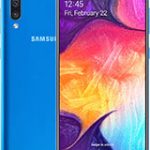 | Samsung Galaxy A50 | 0.34 W/kg | 21.25% |
5th | Samsung Galaxy S9 | 0.35 W/kg | 21.88% |
6th | Samsung Galaxy S9 Plus | 0.36 W/kg | 22.5% |
Tied 6th | Samsung Galaxy S10e | 0.36 W/kg | 22.5% |
7th | Samsung Galaxy S8 Plus | 0.41 W/kg | 25.63% |
8th | Samsung Galaxy A14 | 0.48 W/kg | 30% |
| SAR Rank | Phone Model | Head SAR | % Legal Limit |
9th | Samsung Galaxy A16 | 0.51 W/kg | 31.88% |
10th | Samsung Galaxy A15 5G | 0.56 W/kg | 35% |
Tied 10th | Samsung Galaxy A16 5G | 0.56 W/kg | 35% |
Tied 10th | SAMSUNG GALAXY A72 | 0.56 W/kg | 35% |
11th | SAMSUNG GALAXY A32 5G | 0.57 W/kg | 35.63% |
12th | Samsung Galaxy A15 | 0.60 W/kg | 37.5% |
13th | Samsung Galaxy A24 4G | 0.62 W/kg | 38.75% |
14th | Samsung Galaxy A23 4G | 0.63 W/kg | 39.38% |
15th![samsung-galaxy-s21-plus-5g-[1]](https://www.rfsafe.com/wp-content/uploads/2020/12/samsung-galaxy-s21-plus-5g-1-66x66.jpg) | Samsung Galaxy S21 PLUS | 0.65 W/kg | 40.63% |
16th | Samsung Galaxy A23 5G | 0.68 W/kg | 42.5% |
| SAR Rank | Phone Model | Head SAR | % Legal Limit |
17th | Samsung Galaxy S10 Lite | 0.69 W/kg | 43.13% |
18th | Samsung Galaxy A36 | 0.70 W/kg | 43.75% |
Tied 18th | Samsung Galaxy S20 FE | 0.70 W/kg | 43.75% |
19th | Samsung Galaxy A33 5G | 0.71 W/kg | 44.38% |
20th | Samsung Galaxy A25 | 0.72 W/kg | 45% |
Tied 20th | Samsung Galaxy S23 Plus | 0.72 W/kg | 45% |
21st | SAMSUNG GALAXY A73 | 0.74 W/kg | 46.25% |
Tied 21st | Samsung Galaxy S21 | 0.74 W/kg | 46.25% |
22nd | Samsung Galaxy A26 | 0.75 W/kg | 46.88% |
Tied 22nd | Samsung Galaxy A34 | 0.75 W/kg | 46.88% |
| SAR Rank | Phone Model | Head SAR | % Legal Limit |
Tied 22nd | SAMSUNG GALAXY A53 5G | 0.75 W/kg | 46.88% |
Tied 22nd | Samsung Galaxy M54 | 0.75 W/kg | 46.88% |
Tied 22nd | Samsung Galaxy S23 | 0.75 W/kg | 46.88% |
Tied 22nd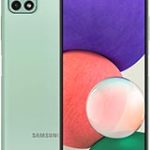 | SAMSUNG GALAXY A22 5G | 0.75 W/kg | 46.88% |
23rd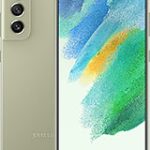 | Samsung Galaxy S21 FE | 0.77 W/kg | 48.13% |
Tied 23rd | Samsung Galaxy S21 Ultra | 0.77 W/kg | 48.13% |
Tied 23rd | SAMSUNG GALAXY M52 5G | 0.77 W/kg | 48.13% |
24th | Samsung Galaxy A03s | 0.79 W/kg | 49.38% |
25th | Samsung Galaxy A35 | 0.80 W/kg | 50% |
Tied 25th | Samsung Galaxy S23 Fe | 0.80 W/kg | 50% |
| SAR Rank | Phone Model | Head SAR | % Legal Limit |
26th | SAMSUNG GALAXY A51 5G | 0.82 W/kg | 51.25% |
| 27th | Google Pixel 9 | 0.87 W/kg | 54.38% |
Tied 27th | Samsung Galaxy A54 5G | 0.87 W/kg | 54.38% |
Tied 27th | Samsung Galaxy A56 | 0.87 W/kg | 54.38% |
28th | Samsung Galaxy A55 | 0.91 W/kg | 56.88% |
| 29th | Google Pixel 9 Pro Xl | 0.92 W/kg | 57.5% |
| Tied 29th | Google Pixel 2 | 0.92 W/kg | 57.5% |
Tied 29th | Samsung Galaxy S24 Fe | 0.92 W/kg | 57.5% |
30th | Samsung Galaxy S20 Plus | 0.94 W/kg | 58.75% |
31st | SAMSUNG GALAXY A52 | 0.95 W/kg | 59.38% |
| SAR Rank | Phone Model | Head SAR | % Legal Limit |
32nd | SAMSUNG GALAXY A22 | 0.97 W/kg | 60.63% |
33rd | Samsung Galaxy S23 Ultra | 0.98 W/kg | 61.25% |
Tied 33rd | Samsung Galaxy A50S | 0.98 W/kg | 61.25% |
34th | SAMSUNG GALAXY A14 5G | 1.00 W/kg | 62.5% |
35th | Apple iPhone 16 Pro Max | 1.01 W/kg | 63.13% |
36th | Apple iPhone 15 Plus | 1.02 W/kg | 63.75% |
37th | Samsung Galaxy S22 | 1.03 W/kg | 64.38% |
| 38th | Google Pixel 8 | 1.05 W/kg | 65.63% |
Tied 38th | Samsung Galaxy Z Flip3 | 1.05 W/kg | 65.63% |
39th | Apple iPhone 5 | 1.06 W/kg | 66.25% |
| SAR Rank | Phone Model | Head SAR | % Legal Limit |
40th | Samsung Galaxy S20 | 1.07 W/kg | 66.88% |
Tied 40th | Apple iPhone 15 Pro Max | 1.07 W/kg | 66.88% |
41st | Apple iPhone X | 1.08 W/kg | 67.5% |
Tied 41st | Apple iPhone 16 | 1.08 W/kg | 67.5% |
| 42nd | GOOGLE PIXEL 7 PRO | 1.09 W/kg | 68.13% |
Tied 42nd | Apple iPhone 7 Plus | 1.09 W/kg | 68.13% |
Tied 42nd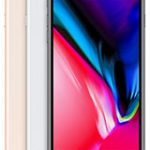 | Apple iPhone 8 Plus | 1.09 W/kg | 68.13% |
Tied 42nd | Apple iPhone 16 Pro | 1.09 W/kg | 68.13% |
| 43rd | Google Pixel 6A | 1.10 W/kg | 68.75% |
Tied 43rd | Apple iPhone 7 | 1.10 W/kg | 68.75% |
| SAR Rank | Phone Model | Head SAR | % Legal Limit |
| 44th | Google Pixel 8a | 1.11 W/kg | 69.38% |
| Tied 44th | GOOGLE PIXEL 6 PRO | 1.11 W/kg | 69.38% |
Tied 44th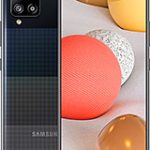 | SAMSUNG GALAXY A42 5G | 1.11 W/kg | 69.38% |
| 45th | Google Pixel 8 Pro | 1.12 W/kg | 70% |
Tied 45th | Apple iPhone 6s Plus | 1.12 W/kg | 70% |
Tied 45th | Samsung Galaxy S25 | 1.12 W/kg | 70% |
Tied 45th | Apple iPhone 15 | 1.12 W/kg | 70% |
| 46th | Google Pixel 5A 5G | 1.13 W/kg | 70.63% |
| Tied 46th | Google Pixel 9 Pro | 1.13 W/kg | 70.63% |
Tied 46th | Apple iPhone 16 Plus | 1.13 W/kg | 70.63% |
| SAR Rank | Phone Model | Head SAR | % Legal Limit |
47th | Apple iPhone SE | 1.14 W/kg | 71.25% |
Tied 47th | Apple iPhone 8 | 1.14 W/kg | 71.25% |
Tied 47th | Apple iPhone 11 | 1.14 W/kg | 71.25% |
Tied 47th | Apple iPhone 14 PLUS | 1.14 W/kg | 71.25% |
Tied 47th | Apple iPhone 15 Pro | 1.14 W/kg | 71.25% |
48th | Apple iPhone 11 Pro | 1.15 W/kg | 71.88% |
Tied 48th | Apple iPhone 14 | 1.15 W/kg | 71.88% |
Tied 48th | Apple iPhone 14 Pro | 1.15 W/kg | 71.88% |
Tied 48th | Apple iPhone 14 Pro Max | 1.15 W/kg | 71.88% |
| 49th | Google Pixel 5 | 1.16 W/kg | 72.5% |
| SAR Rank | Phone Model | Head SAR | % Legal Limit |
| Tied 49th | Google Pixel 9 Pro Fold | 1.16 W/kg | 72.5% |
Tied 49th | Samsung Galaxy A12 | 1.16 W/kg | 72.5% |
Tied 49th | Samsung Galaxy S24 Plus | 1.16 W/kg | 72.5% |
Tied 49th | Apple iPhone XS MAX | 1.16 W/kg | 72.5% |
Tied 49th | Apple iPhone 11 Pro Max | 1.16 W/kg | 72.5% |
Tied 49th | Apple iPhone 12 Mini | 1.16 W/kg | 72.5% |
Tied 49th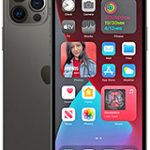 | Apple iPhone 12 Pro | 1.16 W/kg | 72.5% |
50th | Apple iPhone 12 | 1.17 W/kg | 73.13% |
Tied 50th | Apple iPhone 12 Pro Max | 1.17 W/kg | 73.13% |
Tied 50th | Apple iPhone 13 Pro Max | 1.17 W/kg | 73.13% |
| SAR Rank | Phone Model | Head SAR | % Legal Limit |
51st | Samsung Galaxy S22 Ultra | 1.18 W/kg | 73.75% |
Tied 51st | Apple iPhone 6 | 1.18 W/kg | 73.75% |
Tied 51st![apple-iphone-13[1]](https://www.rfsafe.com/wp-content/uploads/2020/12/apple-iphone-131-66x66.jpg) | Apple iPhone 13 | 1.18 W/kg | 73.75% |
52nd | Apple iPhone 6 Plus | 1.19 W/kg | 74.38% |
Tied 52nd![samsung-galaxy-s22-plus-5g[1]](https://www.rfsafe.com/wp-content/uploads/2021/12/samsung-galaxy-s22-plus-5g1-66x66.jpg) | Samsung Galaxy S22 Plus | 1.19 W/kg | 74.38% |
Tied 52nd | Apple iPhone Xs | 1.19 W/kg | 74.38% |
Tied 52nd![apple-iphone-13-mini[1]](https://www.rfsafe.com/wp-content/uploads/2020/12/apple-iphone-13-mini1-66x66.jpg) | Apple iPhone 13 Mini | 1.19 W/kg | 74.38% |
| 53rd | Google Pixel 7a | 1.20 W/kg | 75% |
Tied 53rd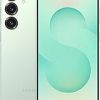 | Samsung Galaxy S25 Plus | 1.20 W/kg | 75% |
Tied 53rd![apple-iphone-13-pro[1]](https://www.rfsafe.com/wp-content/uploads/2020/12/apple-iphone-13-pro1-66x66.jpg) | Apple iPhone 13 Pro | 1.20 W/kg | 75% |
| SAR Rank | Phone Model | Head SAR | % Legal Limit |
Tied 53rd | Apple iPhone SE 3 (2022) | 1.20 W/kg | 75% |
Tied 53rd | Apple iPhone 16e | 1.20 W/kg | 75% |
54th | Samsung Galaxy S24 | 1.23 W/kg | 76.88% |
55th | Samsung Galaxy S24 Ultra | 1.26 W/kg | 78.75% |
Tied 55th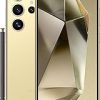 | Samsung Galaxy S25 Ultra | 1.26 W/kg | 78.75% |
56th | Samsung Galaxy A13 | 1.27 W/kg | 79.38% |
Head SAR: What You Need to Know About Cell Phone Radiation
Cell phones have become an essential part of our daily lives, allowing us to stay connected with the world at all times. However, the use of cell phones has also raised concerns about the potential health risks associated with prolonged exposure to cell phone radiation, specifically in the form of Specific Absorption Rate (SAR) values. In this article, we will provide a detailed overview of head SAR, what it is, how it’s measured, and what the safe limits are.
Introduction
The use of cell phones has increased significantly over the years, with billions of people relying on them for communication and entertainment. However, there has been growing concern about the potential health risks associated with cell phone radiation exposure, specifically the SAR value. SAR measures the amount of RF energy absorbed by the human body when using a wireless device, such as a cell phone.
What is Head SAR?
Head SAR is a measure of the amount of RF energy absorbed by the tissue in the head when using a cell phone. It is measured in watts per kilogram (W/kg). When you make a call on your cell phone, the radiofrequency waves produced by the device are absorbed by your body. SAR is used to measure the amount of energy absorbed by your head during the call.
How is Head SAR Measured?
Head SAR is measured using a specific testing protocol that involves the use of a Specific Anthropomorphic Mannequin (SAM) phantom. The SAM phantom is a model of the human head that is filled with liquids that simulate the RF absorption characteristics of different human tissues.
During the SAR measurement, the cell phone is placed in different positions on the SAM phantom, including the cheek and tilt positions. In the cheek position, the cell phone is placed under the phantom so that the middle part of the acoustic output touches the center of the ear. The phone is then rotated so that the vertical center line goes through the middle of the phone. The phone is then lifted against the phantom so that the ear and cheek touch it. In the tilt position, the angle is increased by 15 degrees, and other changes are not made compared to the cheek position.
After the cell phone is placed on the SAM phantom, a radiofrequency (RF) signal is sent to the phone at its highest power level, and the SAR value is measured in watts per kilogram (W/kg).
What are Safe Head SAR Limits?
The Federal Communications Commission (FCC) has set a maximum SAR limit of 1.6 W/kg for cell phones sold in the United States. This limit is based on the guidelines set by the International Commission on Non-Ionizing Radiation Protection (ICNIRP). The ICNIRP guidelines are based on scientific research and are designed to protect against potential health risks associated with cell phone radiation exposure.
How Can You Reduce Head SAR Exposure?
There are several ways to reduce head SAR exposure while using a cell phone, including:
- Use a hands-free device or speakerphone to keep the phone away from your head
- Text or use messaging apps instead of making calls
- Use a cell phone with a lower SAR value
- Keep your calls short
- Use your cell phone in areas with good reception to reduce the power required by the device
Conclusion
In conclusion, head SAR is a measure of the amount of RF energy absorbed by the tissue in the head when using a cell phone. It is measured using a Specific Anthropomorphic Mannequin (SAM) phantom and a specific testing protocol. The safe limit for head SAR is 1.6 W/kg, as set by the Federal Communications Commission (FCC) in the United States. By following simple steps to reduce exposure, you can protect yourself from potential harmful effects of prolonged cell phone use.
It is important to note that there is still some controversy and debate surrounding the safe levels of RF exposure from cell phones. While research has been ongoing for many years, there is still no conclusive evidence linking cell phone use to negative health effects.
There are also some limitations and shortcomings in the current testing and regulations surrounding head SAR. For example, the testing only considers the effects of single-frequency exposure, while real-life cell phone use often involves multiple frequencies. In addition, the testing does not account for long-term exposure over years or even decades, and may not fully reflect the effects on vulnerable populations such as children.
Despite these limitations, head SAR remains an important tool in ensuring the safety of wireless technology use. By adhering to safe limits and taking simple steps to reduce exposure, we can continue to enjoy the benefits of modern technology while minimizing the potential risks.
Controversy Surrounding Head SAR
While the testing of SAR values is designed to ensure the safety of wireless technology, there is still some controversy surrounding the topic. Some studies have suggested that long-term exposure to RF energy could have adverse health effects, such as an increased risk of brain cancer.
However, the scientific community is divided on the issue, with some studies suggesting a link between RF energy exposure and health risks, while others have found no significant evidence of harm. The World Health Organization (WHO) has classified RF energy as a possible carcinogen, but this does not necessarily mean that exposure to RF energy causes cancer.
The controversy surrounding head SAR values has led to a call for more research and testing to be conducted to better understand the potential health risks associated with long-term exposure to RF energy. The International Commission on Non-Ionizing Radiation Protection (ICNIRP) regularly reviews its guidelines for exposure to RF energy to ensure that they are up-to-date and reflect the latest scientific evidence.
Conclusion
SAR testing is an essential process in ensuring the safety of wireless technology use. The use of the SAM phantom and specific testing protocol provides a standardized and repeatable method for measuring the amount of RF energy absorbed by the tissue in the head. By adhering to SAR limits and testing protocols, we can better understand the potential health risks associated with long-term exposure to RF energy and ensure the safety of wireless technology.
While controversy surrounds the issue of long-term RF energy exposure, continued research and testing can help to provide a better understanding of the potential risks and ensure that SAR limits are up-to-date and reflect the latest scientific evidence. As technology continues to evolve, SAR testing will remain a critical component in ensuring the safety of wireless technology use.
Shortcomings
Despite the standardized testing procedures and the established SAR limits, there are still some limitations to the current methods of measuring SAR values.
Firstly, the current testing protocol only measures the SAR values in the head and body, but it does not take into account the effects of RF energy on other parts of the body, such as the hands or reproductive organs. While the head and body are the most commonly exposed areas, there are still concerns about the potential effects of RF energy on other body parts.
Secondly, the SAR values only consider the thermal effects of RF energy, but not the non-thermal effects. Some studies have suggested that non-thermal effects of RF energy, such as DNA damage or altered gene expression, could also have potential health implications. However, the current SAR testing protocol does not measure or take into account these non-thermal effects.
Thirdly, the current SAR limits and testing protocols are based on studies conducted on healthy adult men, and may not be representative of the effects of RF energy on other populations, such as children, pregnant women, or individuals with pre-existing health conditions.
Finally, the current SAR testing protocol does not account for the potential effects of long-term exposure to RF energy. While the current SAR limits aim to ensure that the short-term exposure to RF energy is within safe levels, there are still concerns about the potential effects of long-term exposure, especially with the increasing use of wireless technology in our daily lives.
In conclusion, while the current SAR testing protocol provides a standardized and repeatable method for measuring the amount of RF energy absorbed by the tissue in the head and body, there are still some limitations and concerns about the potential effects of RF energy on other body parts, non-thermal effects, different populations, and long-term exposure. It is important to continue to research and monitor the potential health effects of RF energy, and to adjust the SAR limits and testing protocols accordingly, to ensure the safety of wireless technology use.







